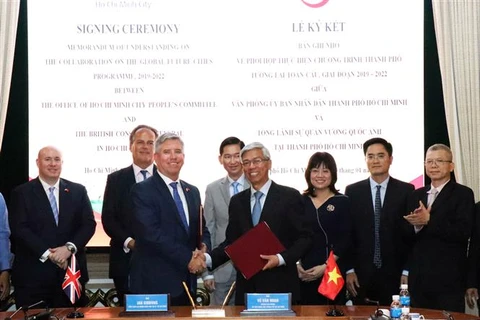 Director of the municipal Department of Agriculture and Rural Development Nguyen Phuoc Trung (Photo: VNA)
Director of the municipal Department of Agriculture and Rural Development Nguyen Phuoc Trung (Photo: VNA)HCM City (VNA) – Ho Chi Minh City’s agricultural sector will concentrate on shifting to crops and animals that can bring greater economic value and improve farmers’ incomes, heard a conference in the city on January 8.
Director of the municipal Department of Agriculture and Rural Development Nguyen Phuoc Trung said the southern city has announced its list of key plants and animals, including vegetables, flowers, pigs, dairy cows, brackish shrimps, and ornamental fish.
In 2019, the agriculture sector sets to maintain its gross regional domestic product (GRDP) growth at a high level of 6 percent and increase the average production value to 550 million VND (23,712 USD) per hectare, from 502 million VND (21,643 USD) per hectare in 2018.
To realise this target, the city will forge ahead with agricultural restructuring and boost the conversion of low-yield rice, sugarcane, and rubber farming to production of key crops products using high technology and biotechnology, Trung said.
HCM City is striving to expand its area of vegetables certified with Vietnamese Good Agricultural Practices (VietGAP) from 45.5 percent to 60 percent (equivalent to 12,300 hectares), while raising the rate of VietGAP pigs from 45 percent to 47 percent (equivalent to 131,600 heads).
Deputy Director of the municipal Department of Agriculture and Rural Development Tran Ngoc Ho suggested the city needs more new and efficient cooperatives to realise the goals of sustainable agriculture and urban development.
He suggested local authorities put forth more preferential policies to attract young and qualified human resources to improve the management of cooperatives, as well as encourage farmers to join cooperatives.
The official recommended developing processing, promoting trade, and expanding markets to increase the value and competitiveness of farm produce.
Besides, the agriculture sector should accelerate administrative reform and improve the business investment environment in order to draw foreign investment in the production, distribution, and export of agricultural products, he added. –VNA
VNA























